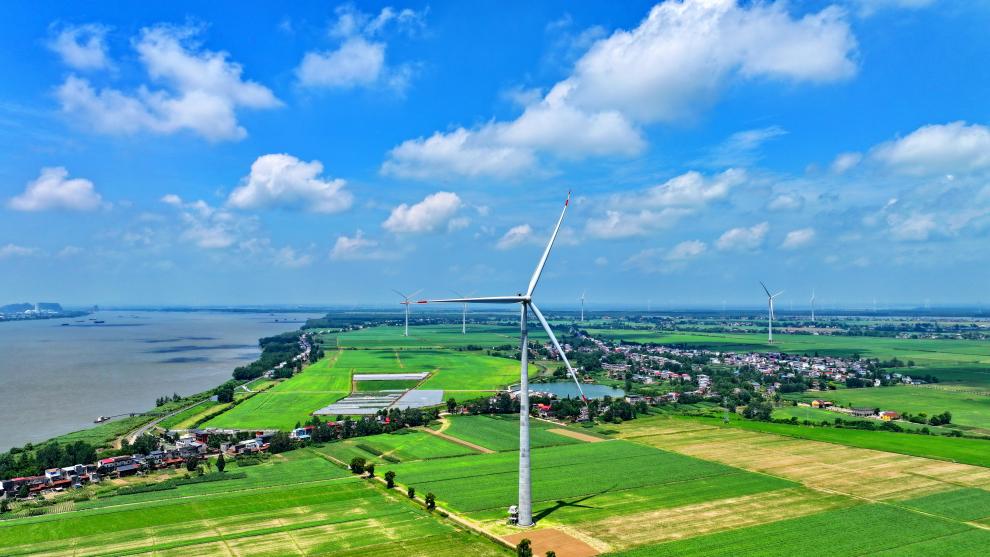




- BRNN
- BRI News
- BRNN News
- Database
Official Documents Polices and Regulations
Inter-government Documents International Cooperation BRI Countries
Business Guide Economic Data BRI Data
Trade
Investment Projects Latest projects
Cases - Content Pool
China is undergoing a quiet but profound green transformation that is reshaping not only its own economy but also the global energy landscape. Once known as the world's largest emitter of carbon dioxide, China is now emerging as a global leader in renewable energy, with data from 2024 and 2025 highlighting a dramatic shift toward clean power. This transformation reflects the country's growing commitment to environmental sustainability, energy security, and industrial modernization, all while maintaining strong economic momentum.

Wind turbines spin in a wind farm in Mianchuan township, Jiujiang, east China's Jiangxi province. (Photo/Zhu Haipeng)
In 2024 alone, China installed about 360 gigawatts (GW) of wind and solar power, more than any other country. That surge enabled China to reach its previously stated 2030 goal of 1,200 GW of combined wind and solar capacity nearly six years ahead of schedule. As of March 2025, for the first time ever, China's installed wind and solar capacity surpassed its thermal (fossil fuel-based) power capacity, a milestone that marks a significant pivot in the country's energy structure.
Behind these numbers is a larger strategic shift. China is not just adding capacity; it's actively rebalancing its power grid. China's newly installed wind and solar power capacity nearly doubled year-on-year during the first half of 2025. This was supported by a growing mix of energy storage solutions and grid innovations aimed at managing the intermittent nature of renewables. The share of non-fossil fuel sources in China's installed capacity has now risen to over 60 percent, a sharp increase from just a decade ago.
The Chinese government has also laid out new climate targets for 2035, building on its 2060 carbon neutrality pledge. These include reducing national greenhouse gas emissions by 7–10 percent from their peak and expanding the installed capacity of wind and solar power to more than six times the 2020 levels. These goals reflect not just environmental intent, but also China's strategic focus on becoming a clean tech superpower.
Beyond domestic policy, China's rise in clean energy is having a global impact. The country dominates the manufacturing of solar panels, wind turbines, and lithium-ion batteries, driving down global prices and making clean energy more accessible worldwide. It also holds a commanding lead in renewable energy patents, positioning itself at the forefront of innovation. This scale, along with its export power, gives China significant leverage in global energy markets and climate diplomacy.
China's green transformation is not just symbolic, it is structural. The transition to renewables is reshaping its energy system, creating new industries, and driving technological innovation. With sustained momentum, strategic investments, and regulatory evolution, China is well positioned to build a cleaner, more resilient energy future.
The world is watching closely. China's success in renewables could be a game-changer for global climate targets. If it continues on its current trajectory, China won't just be the world's factory, it will be the engine of the world's clean energy revolution.

Tel:86-10-65363107, 86-10-65368220, 86-10-65363106